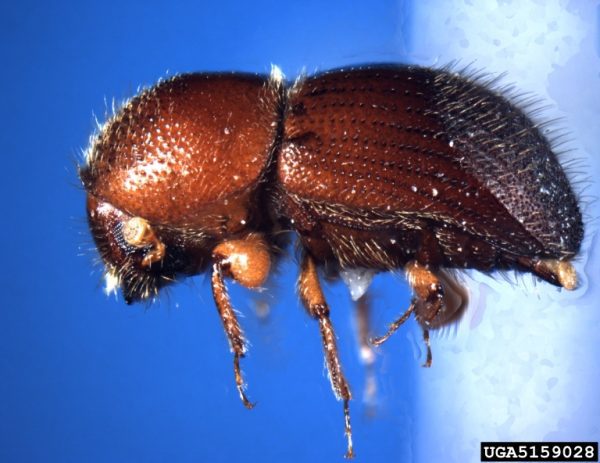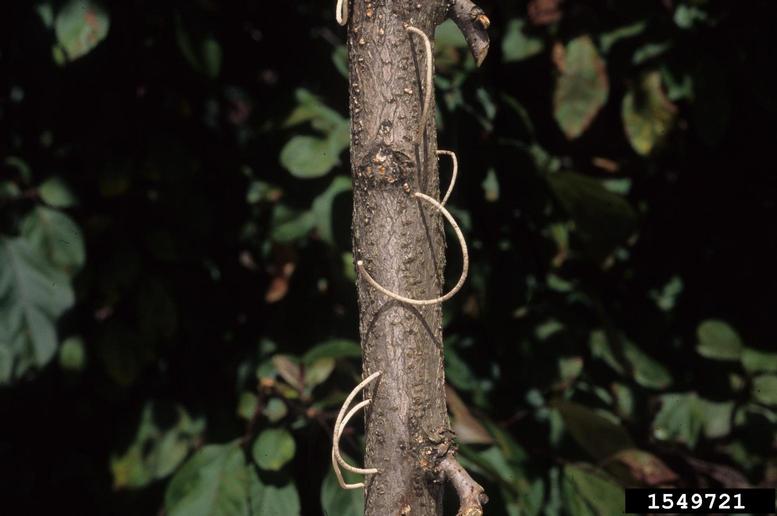Lawn & Garden

Granulate Ambrosia beetles have been causing quite a stir in home landscapes in May and June. The influx this year is likely due to the winter cold damage and hard late spring frost we had this year on so many of our landscape trees. This beetle was introduced into the United States in the early 1970s in South Carolina and has since spread throughout the Southeast and as far north as Maryland. This tiny beetle is a pest of woody ornamental, fruit, and nut trees and can cause significant damage in nursery, landscape, and orchard settings.

Photo by J.R. Baker & S.B. Bambara, North Carolina State University, Bugwood.org
Granulate Ambrosia Beetle Hosts
Granulate ambrosia beetles emerge in early spring and attack thin-barked, deciduous trees. Tree species most commonly reported with damage are dogwood, redbud, maple, ornamental cherry, Japanese maple, and crape myrtle. Other reported hosts include pecan, peach, plum, persimmon, golden rain tree, sweet gum, Shumard oak, Chinese elm, magnolia, fig, hydrangea, and azalea.
These beetles attack young trees and small branches of mature trees. Female beetles bore into the trunks and branches (1 to 4 inches in diameter) and excavate galleries in the wood. In addition to boring damage, female beetles inoculate trees with ambrosia fungus, which can block xylem vessels and interfere with vascular transport. Infested plants often die from boring damage, ambrosia fungus, or infection by a secondary pathogen.
These beetles attack seemingly healthy trees as well as stressed or unhealthy trees. This year’s influx is due to trees under more stress than usual, as a result of cold damage. Visible symptoms include wilted foliage and strands of boring dust protruding from small holes. Serious attacks that result in tree death usually occur during the leafing-out stage.
Ambrosia Beetle Control
Infestations can be easily be identified by toothpick-like strands protruding up to 1.5 inches from the bark of the host plant. The strands of boring dust are produced by the female beetle as she excavates her gallery. The strands are fragile and are easily broken off by wind or rain–leaving only pencil-lead sized holes. This being the case, your tree may be infected and you would not even know it until you start seeing the dieback of the foliage.
Preventative applications of pyrethroid insecticides can protect trees by preventing Granulate Ambrosia Beetles from excavating galleries. However, once beetles are inside trees they cannot be killed with insecticides. Fungicides are also ineffective against the ambrosia fungus. Thus, the timing of preventative insecticide applications is crucial to protect trees from damage by this pest. According to Charles Ray, an Alabama Cooperative Extension System entomologist, recent research shows the first flight of granulate ambrosia beetles in spring occurs at almost exactly the same time as Bradford pears begin to bloom. This gives a clear sign to a homeowner of when they should apply preventative sprays.
If you notice the white strands protruding from the branches or main trunk of your trees or shrubs the plant parts should be removed and destroyed.
Featured image by Jim Baker, North Carolina State University, Bugwood.org

